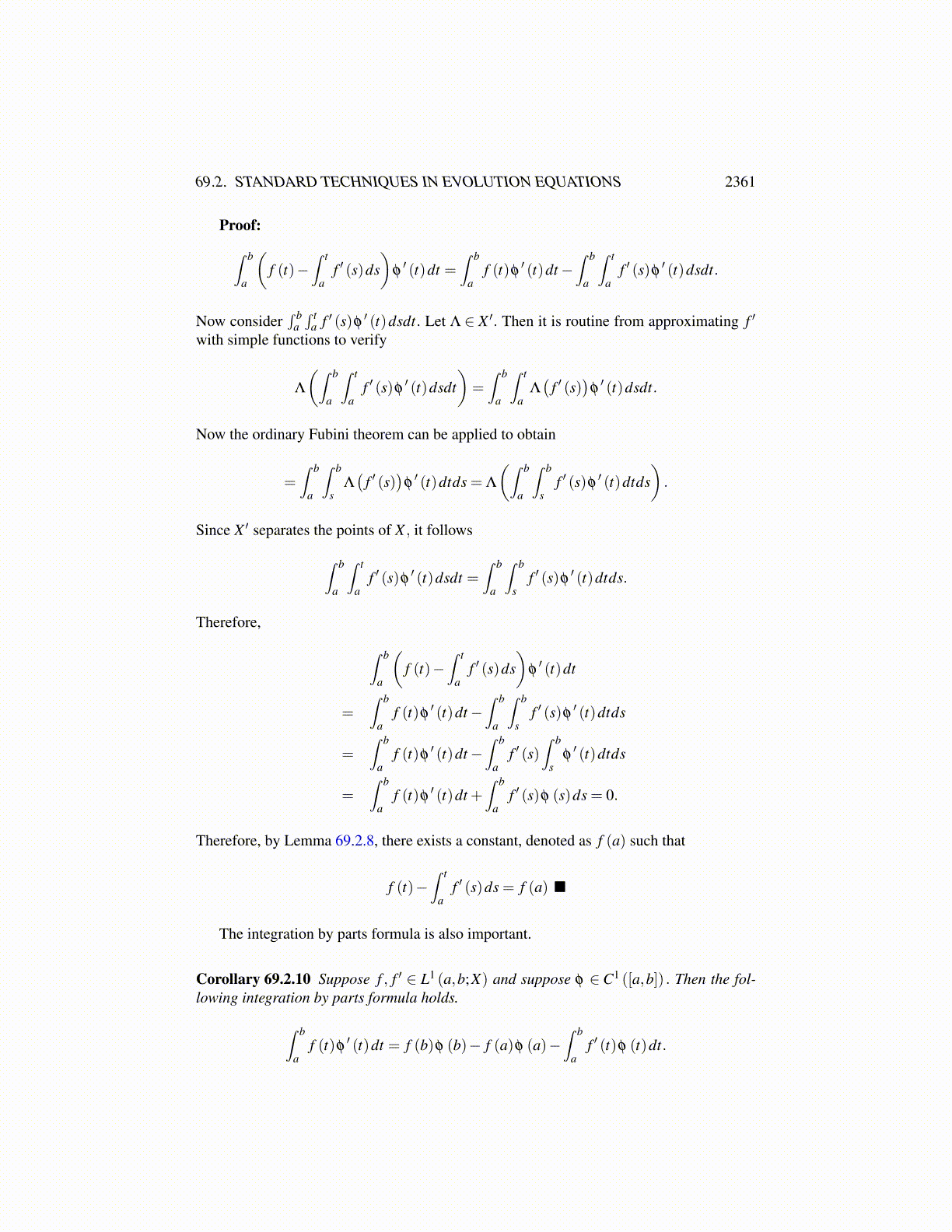
69.2. STANDARD TECHNIQUES IN EVOLUTION EQUATIONS 2361
Lemma 69.2.4 Let f be as defined in Definition 69.2.2. Then for f ∈ Lp (a,b;X) for p ∈[1,∞),
limδ→0
∫ b
a
∣∣∣∣ f (t−δ )− f (t)∣∣∣∣p
X dt = 0.
Proof: Regarding the measure space as (a,b) with Lebesgue measure, by regularity ofthe measure, there exists g∈Cc (a,b;X) such that || f −g||p < ε. Here the norm is the normin Lp (a,b;X) . Therefore,
|| fh− f ||p ≤ || fh−gh||p + ||gh−g||p + ||g− f ||p≤
(21/p +1
)|| f −g||p + ||gh−g||p
<(
21/p +1)
ε + ε
whenever h is sufficiently small. This is because of the uniform continuity of g. Therefore,since ε > 0 is arbitrary, this proves the lemma.
Definition 69.2.5 Let f ∈ L1 (a,b;X) . Then the distributional derivative in the sense of Xvalued distributions is given by
f ′ (φ)≡−∫ b
af (t)φ
′ (t)dt
Then f ′ ∈ L1 (a,b;X) if there exists h ∈ L1 (a,b;X) such that for all φ ∈C∞c (a,b) ,
f ′ (φ) =∫ b
ah(t)φ (t)dt.
Then f ′ is defined to equal h. Here f and f ′ are considered as vector valued distributionsin the same way as was done for scalar valued functions.
Lemma 69.2.6 The above definition is well defined.
Proof: Suppose both h and g work in the definition. Then for all φ ∈C∞c (a,b) ,∫ b
a(h(t)−g(t))φ (t)dt = 0.
Therefore, by Lemma 69.2.1, h(t)−g(t) = 0 a.e.The other thing to notice about this is the following lemma. It follows immediately
from the definition.
Lemma 69.2.7 Suppose f , f ′ ∈ L1 (a,b;X) . Then if [c,d]⊆ [a,b], it follows that(
f |[c,d])′=
f ′|[c,d]. This notation means the restriction to [c,d] .
Recall that in the case of scalar valued functions, if you had both f and its weak deriva-tive, f ′ in L1 (a,b) , then you were able to conclude that f is almost everywhere equal to acontinuous function, still denoted by f and
f (t) = f (a)+∫ t
af ′ (s)ds.